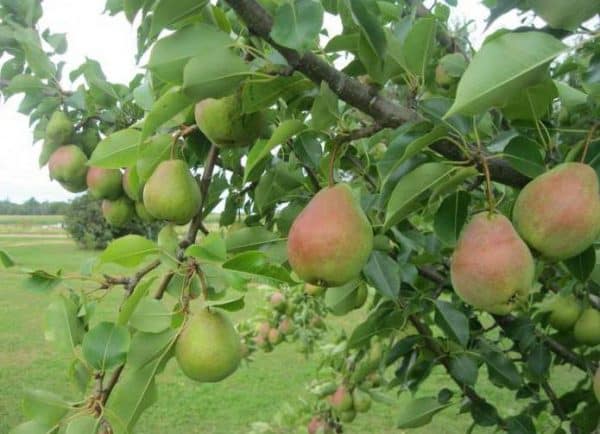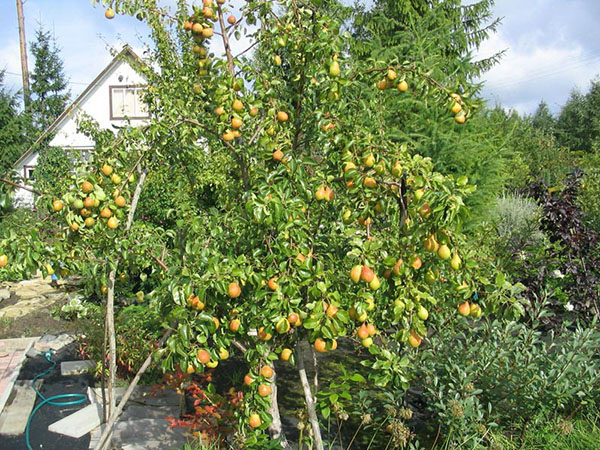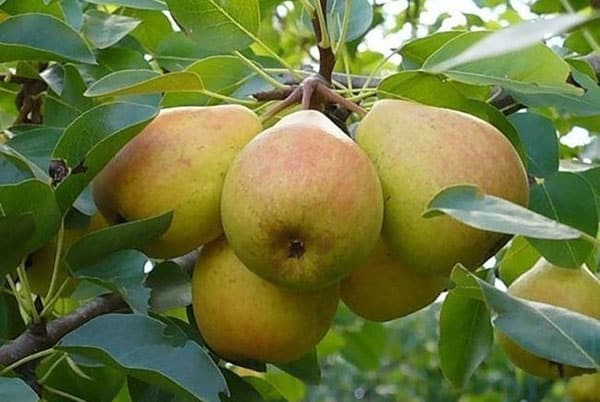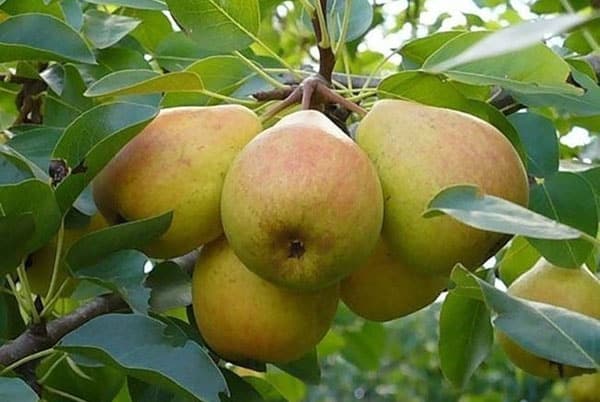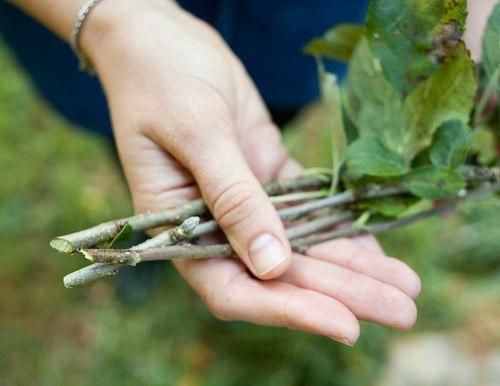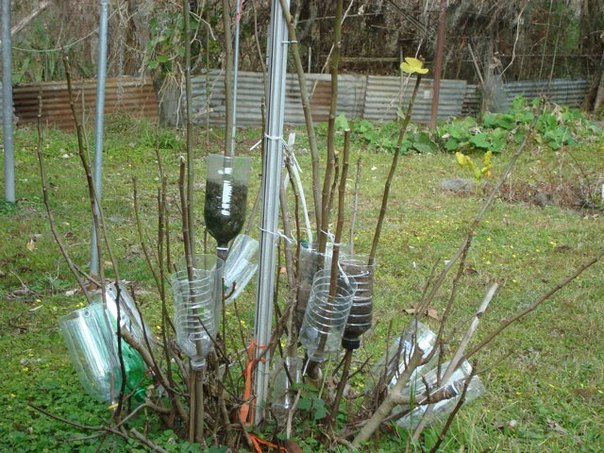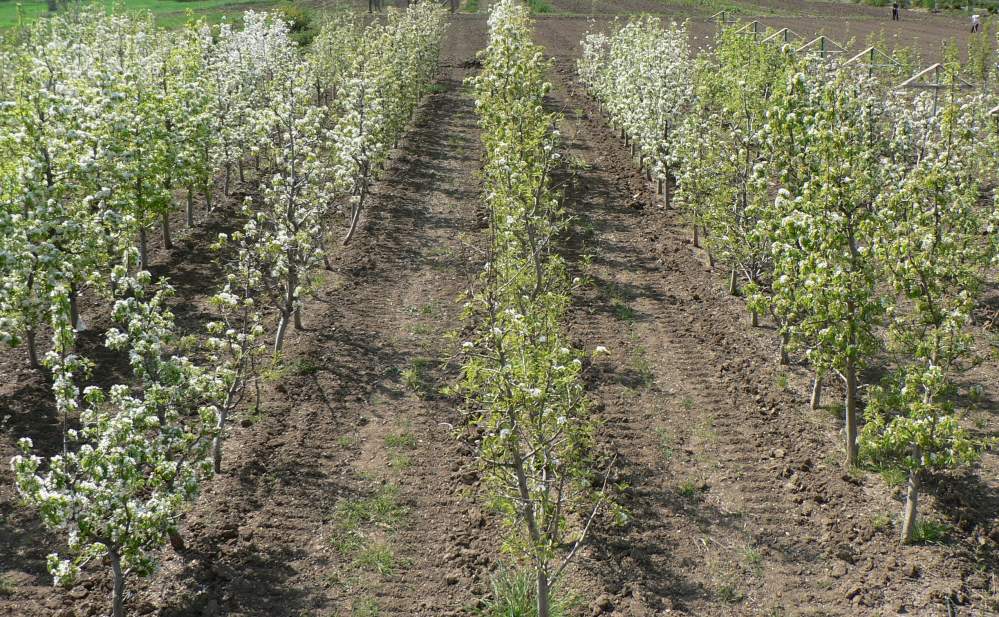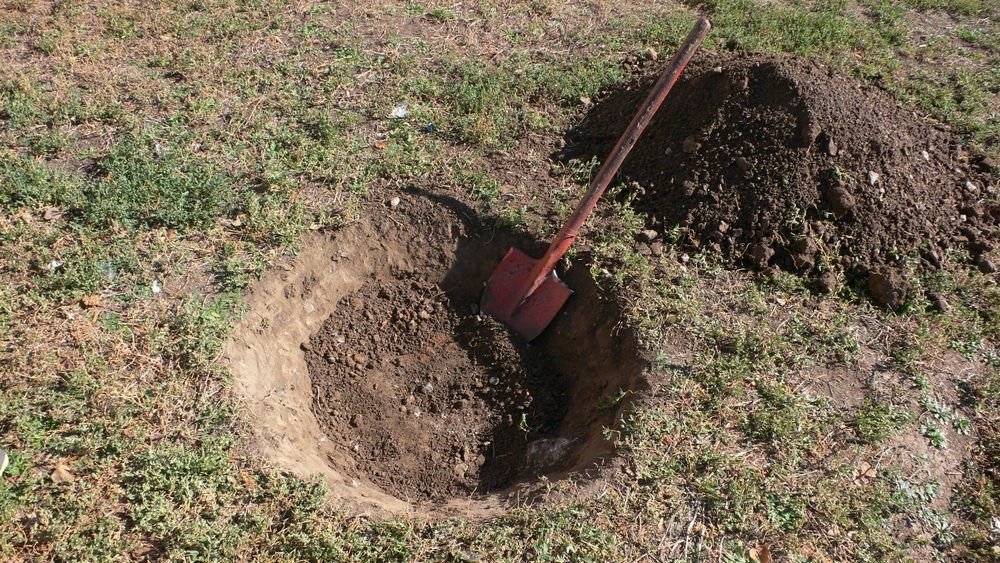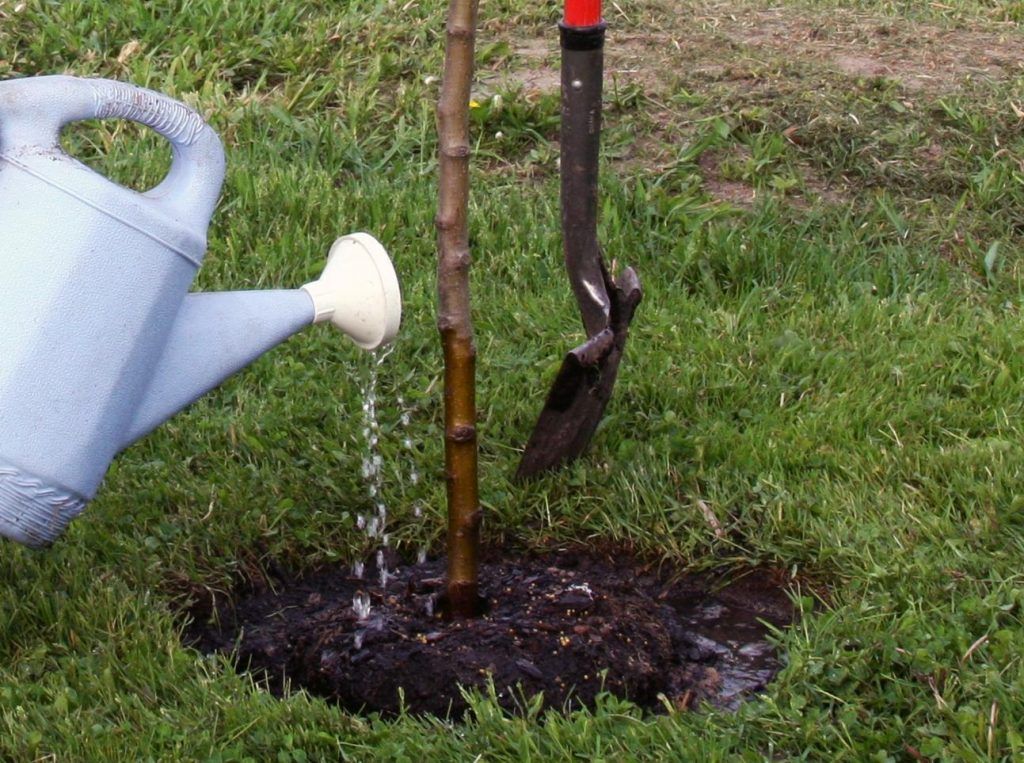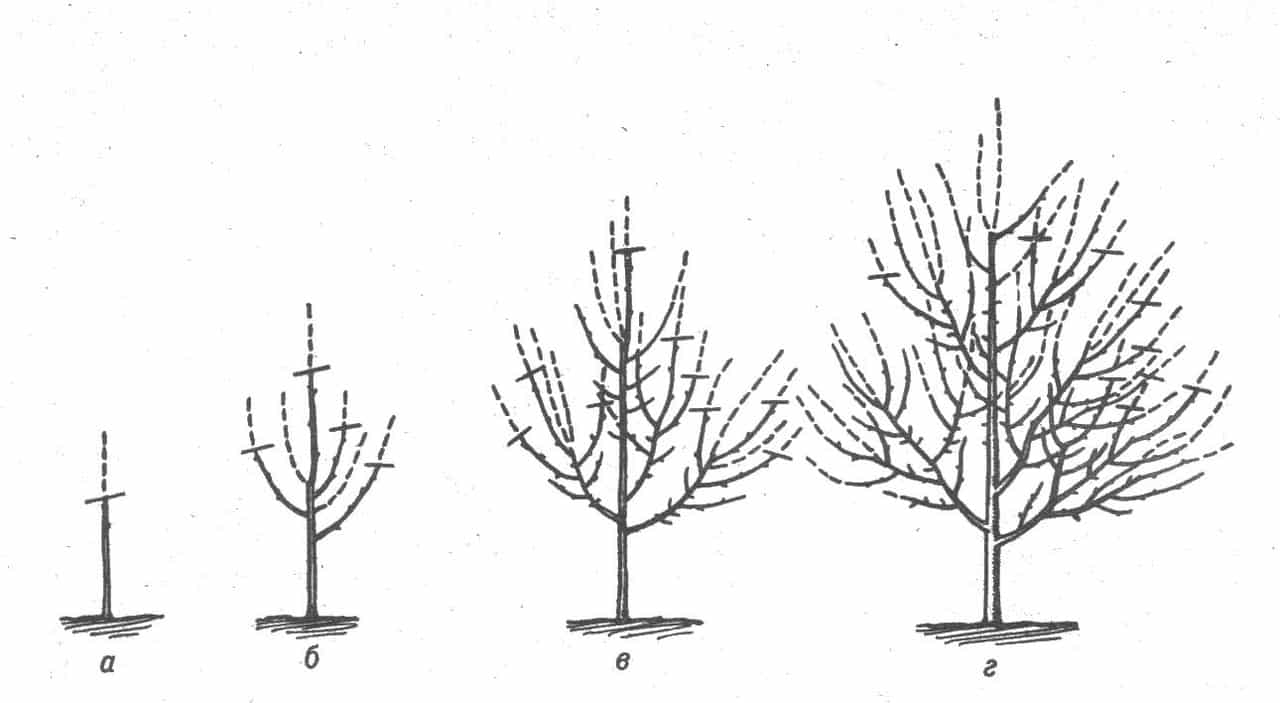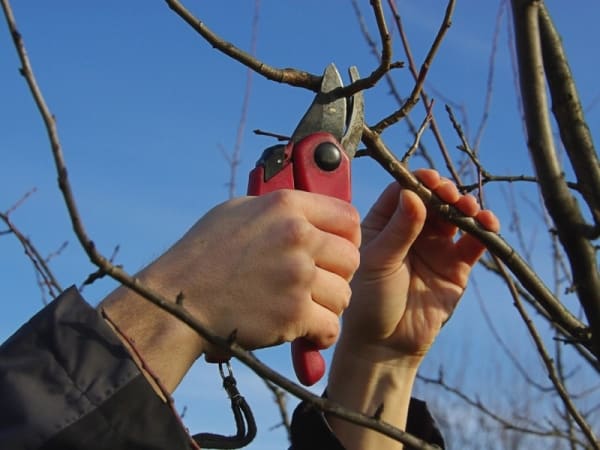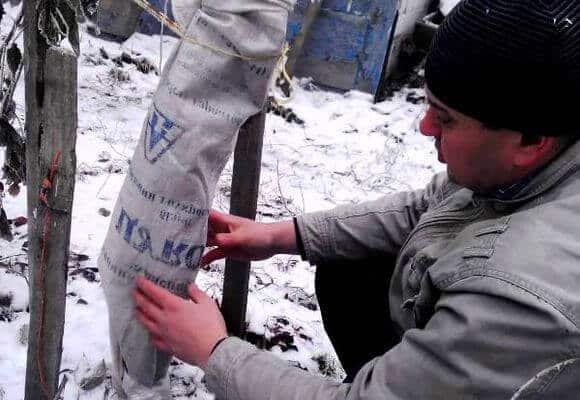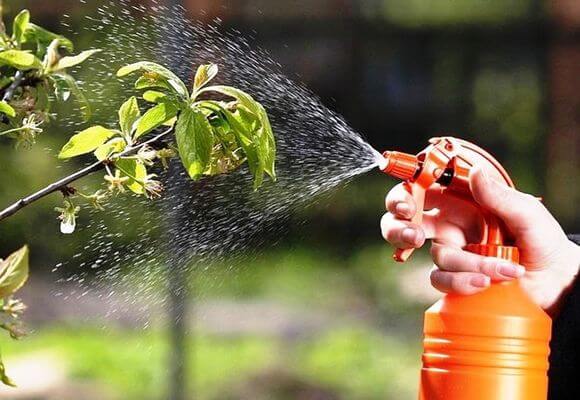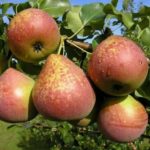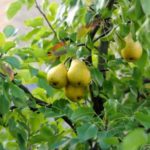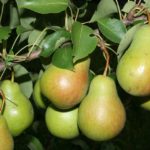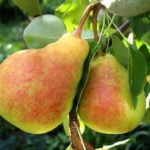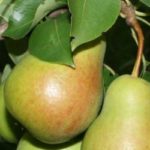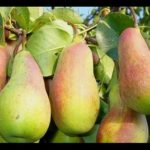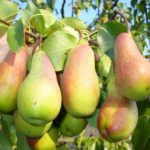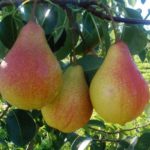Gardeners who grow pears look for varieties that meet the needs and wishes of the family. Veles pears have a lot of advantages, thanks to which they are favorites in some gardens.
- Description and full characteristics of the variety
- Pollination of the Veles variety
- Pollinator varieties
- Tree height
- Lifespan
- Winter hardiness
- Productivity
- Cyclicity of fruiting
- Self-fertility
- Disease resistance
- Advantages and disadvantages of Veles pear
- Reproduction methods
- Cuttings
- By layering
- How to plant a plant correctly
- How to choose a seedling
- Choosing a place and time for landing
- Digging a planting hole
- Pear planting technology
- Caring for Velesa
- Watering intensity
- Top dressing
- Trimmings
- Crown formation
- Regulatory
- Supportive
- Sanitary
- Rules for pruning
- Preparing for winter
- Diseases and pests
- Characteristic pear diseases and measures to combat them
- Insect pests and methods of dealing with them
- Ripening period and harvest
- To which regions is the variety more adapted?
Description and full characteristics of the variety
Before planting a plant, a summer resident strives to obtain more useful information. To do this, he studies the description of the variety, and, based on the information received, makes a choice in favor of the species.
Pollination of the Veles variety
The partially self-fertile type of Veles pear needs to be grown in the vicinity of pollinating varieties. The plant copes with pollination on its own, but it is still better to have several other trees in the garden that will help increase productivity.
Pollinator varieties
Summer residents recommend planting the following varieties together:
- Voskresenskaya Large;
- Simply Maria;
- Rogneda;
- Chizhovskaya;
- Northern woman.
The presence of trees in the garden that bloom at the same time as Veles pears increases the harvest volume significantly.
Tree height
The tree reaches its maximum height by 10 years of age. Then the size of the crop is 4 m. The crown is slightly drooping, so in the spring, during flowering, the pear will decorate any garden plot. The summer resident himself regulates the height of the adult plant, forming the crown in any suitable way.
Lifespan
The variety was recently bred, so it is not yet possible to reliably say about its lifespan. Growers make the assumption that the tree will have the same lifespan as other crop varieties.
Winter hardiness
Frost resistance is high, the variety is grown in the Moscow region. The tree can easily endure harsh winters.
Productivity
The weight of the fruit is 150-250 g, it all depends on the care of the plants.Compliance with agricultural techniques and planting subtleties allows you to obtain a consistently high harvest of pears every year. One tree produces from 12 to 25 kg of fruit.
The more abundant the harvest, the smaller the fruits are formed. Regulatory pruning is carried out to increase fruit weight.
Cyclicity of fruiting
With proper care, the tree produces fruit without interruption. There is no particular cyclicity in the formation of the ovary and ripening of the fruit.
Self-fertility
The Veles pear is partially self-fertile. If there are no other varieties of pears nearby, there will be fruits, but their quantity is insignificant.
Disease resistance
The tree is immune to crop diseases. But gardeners do not neglect standard prevention techniques.
Advantages and disadvantages of Veles pear
The variety has positive and negative characteristics. The summer resident becomes familiar with this information before planting.
Pros:
- versatility of use;
- low maintenance requirements;
- annual, stable harvest;
- ability to bear fruit in unstable climatic conditions;
- stored for a long time;
- resistance to diseases.
Minuses:
- does not tolerate drought;
- the fruits become smaller with abundant fruiting;
- The beginning of fruiting occurs in the 7th year after planting.
These characteristics of the plant help the summer resident make his choice.
Reproduction methods
I want to grow a good variety on my own plot. The summer resident needs to determine what is the best way to reproduce. There are several common methods; the summer resident himself has the right to choose the appropriate one.
Cuttings
A common method used by many summer residents. The cutting is grafted onto a strong rootstock, and the tree acquires improved characteristics. The cuttings are cut in advance, the middle part of the shoot is taken.Leave 3-4 leaves on each piece. The lower one is immediately cut off. The upper end of the cutting is cut straight, the lower end at an angle.
The prepared planting material is stuck 2-3 cm into the fertile soil and the condition of the leaves is monitored. If they wither, then the seedling will not work. Such a cutting is thrown away immediately, giving the rest a chance to grow.
When the root system begins to actively develop, the cuttings turn green, and the resulting planting material is transplanted to a permanent place.
By layering
The second most popular method of propagating fruit trees. It is necessary to dig down a shoot or a low growing branch. Wait until it gives roots, separate it from the mother tree and plant it in a permanent place.
How to plant a plant correctly
Planting is an important part in growing a fruit tree. It is necessary to follow a lot of subtleties and recommendations of experienced summer residents. Then you will be able to avoid common mistakes and get the declared yield.
How to choose a seedling
The type of tree that will grow in the future depends on what planting material is used during cultivation.
Requirements for a seedling:
- healthy root system;
- intact stems;
- absence of signs of deformation and diseases on planting material.
The seedling is chosen when it is 2-3 years old. Such plants are easier to accept and adapt faster to new conditions.
Choosing a place and time for landing
The site for growing pears is chosen on the sunny side. The culture does not tolerate close groundwater. It is advisable to choose fertile soil. Add fertilizer if necessary. Pick-up time depends on your region of residence. It is recommended to carry it out in the spring. This way the seedling has a better chance of surviving the winter.
Plant before sap flow begins, until mid-April.If grown in the fall, then the period should be calculated so that the tree is well rooted before the first frost.
Digging a planting hole
They do this in advance, dig a hole 1 m deep, 70-80 cm wide. The bottom is filled with fertile soil mixed with peat, humus, river sand and mineral fertilizers.
Pear planting technology
A small mound is formed in the planting hole. A seedling is placed on it and carefully sprinkled with earth. Periodically, the tree is raised, allowing the root system to straighten out. The pear is positioned so that the root collar rises 5-7 cm above the ground.
After planting is completed, the tree trunk circle is watered abundantly and mulched with dry rotted residues.
Caring for Velesa
No matter how correctly the tree is planted, without proper care, the declared harvest will not occur. It is necessary to comply with the norms of watering, fertilizing and other agrotechnical practices.
Watering intensity
Veles pear needs abundant, regular watering. Especially during periods of drought. Young plants are watered once a week, adults once every 3-4 weeks. If there is a lack of moisture, the ovary crumbles. This leads to crop loss. After watering, it is advisable to loosen the tree trunk circle. This helps control weeds and provides oxygen to the roots.
Top dressing
For the first 2-3 years, the pear does not need feeding. Fertilizers applied during planting are consumed by the plant during this time. From the age of 4, organic fertilizers are applied in spring and autumn, and mullein infusion is applied during the fruiting period. Also complex mineral fertilizers, which are used to feed pears in the intervals between applying organic fertilizers.
Trimmings
Proper pruning will help preserve the harvest and prevent plants from getting sick. There are several types of pruning that gardeners carry out annually.
Crown formation
The recommended pruning method is improved bowl. There will be no difficulties in forming using this method. The pear will receive enough light and air. The fruits develop correctly. There are only 3 skeletal branches, the rest are lateral shoots.
Regulatory
With this pruning method, the summer resident regulates the density of the crown. Removing branches that grow inward or incorrectly in early spring.
Supportive
Shortening young shoots. Pruning is expected in the summer. The shoots are cut 5-10 cm from the beginning of the branch.
Sanitary
This pruning is carried out throughout the growing season. All dry, diseased and damaged branches are removed from the tree.
Rules for pruning
Simply cutting off the branches of a tree is not enough. To avoid harm, it is recommended to observe certain subtleties:
- before starting, sharpen and process the tool;
- do not leave stumps;
- Treat large diameter sections with garden varnish.
Following simple rules will help preserve the tree and the harvest.
Preparing for winter
The Veles pear is watered and fertilized in advance. Then cover the trunk circle with mulch and the trunk with roofing material. If necessary, additional snow is added in winter. Focus on weather conditions.
Diseases and pests
The tree has a high degree of stability. But summer residents do not neglect annual treatment against diseases.
Characteristic pear diseases and measures to combat them
The culture is characterized by fungal diseases.Summer residents, without waiting for diseases to develop, treat plants with fungicides and other chemicals.
Prevention is better than cure. To do this, gardeners tidy up the land:
- remove leaves;
- collect plant residues;
- everything is burned or taken far outside the house;
- fertilize and spray with preparations.
In addition to processing, good prevention is weeding, loosening, and mulching.
Insect pests and methods of dealing with them
Many insects try to eat the fruits from the tree. Summer residents set traps and treat them with special preparations.
Ripening period and harvest
In each region, pears ripen differently. The gardener determines the degree of readiness of the fruit by appearance. Pears are collected carefully, carefully sorted and placed in wooden containers.
To which regions is the variety more adapted?
Initially, the variety was adapted to the conditions of the Moscow region. Then it spread to other areas. Due to the high degree of frost resistance, summer residents are experimenting with planting the variety in regions with risky farming. Since the species is still young, there is little research data. Growing a Veles pear will not cause any trouble for its owners. You just need to fulfill simple requirements, the plant will reward you with harvest volumes.

